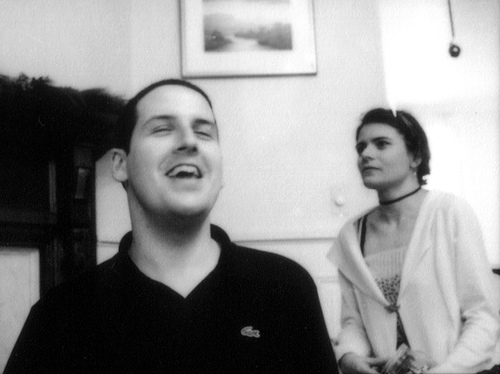This story is related by Robert Anton Wilson in Ishtar Rising:
An art dealer once went to Pablo Picasso and said, "I have a bunch of ‘Picasso’ canvasses that I was thinking of buying. Would you look them over and tell me which are real and which are forgeries?” Picasso obligingly began sorting the paintings into two piles. Then, as the Great Man added one particular picture to the fake pile, the dealer cried, "Wait a minute, Pablo. That’s no forgery. I was visiting you the weekend you painted it." Picasso replied imperturbably, "No matter. I can fake a Picasso as well as any thief in Europe."
[Source, via Chris Rywalt]
Funny, yes, but is it really a larger question? Every try to take something you made that doesn’t speak to you and try to tart it up to make it look like it does? What would that mean, anyway: faking, or working to bring out the "you" in your own work? Useful/not useful?
I have a bunch of photos in a holding bin that do nothing for me, but I can’t quite write off, either. Every once in a while, I go back and revisit them. Sometimes I start fiddling with it, radical cropping, monochrome vs colour, toning, viewing it at different sizes… although I don’t think that’s trying to fake my work—sometimes you have to shovel a little shit before you find the pony—it sometimes feels like it in the moment.
By the way, this doesn’t work most of the time. But sometimes it does: I’ll come back after a few months and see something in a completely different way, and it ends up becoming one of my favourite pieces.
Which leads me to another question: are some of these questions really worth examining this deeply? Most of the artmaking process doesn’t make intellectual sense to me. Yeah, you can say that artmaking trajectory X generally has a set of properties and perils, but at some point, I have to just play it as it lies. I’ve accepted that the above is part of the editing process. It simply is. Why put it under a microscope?
That said, sorting out what the perils are really is important, I think, because once you have a map, you are usefully disabused of the notion that you’re alone in this game. It’s pretty much the same for everybody. You are not a unique and special snowflake on the path of artmaking. While this goes against the grain of the Artist Mystique, I think it’s great, because there are nuts and bolts problems that can be overcome, and how to do so doesn’t have to be a mystery.
